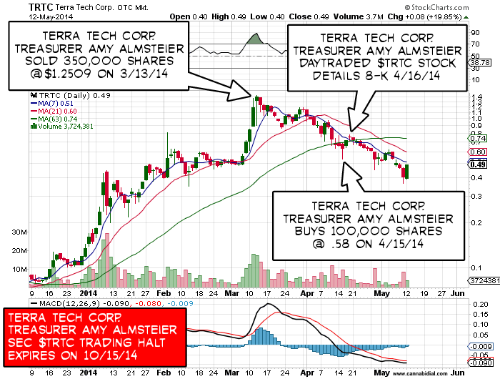How To Pick The Best Telecom Stocks Fundamental Analysis Explained Market Dhara Web Site
Post on: 7 Июнь, 2015 No Comment

Home Fundamental Analysis Explained How To Pick The Best Telecom Stocks
1/10/2012 12:26:24 AM
Administrator
Posts: 562
Ben McClure
ARTICLE HIGHLIGHTSTechnological changes are transforming the communications market. Once heavily regulated, telecom markets have been opened up to new competition.
The telecom industry can quickly change from one year to the next. There can be several years in which it is a safe, reliable investment haven with a dependable customer base and steady, reliable revenue and profit streams; a couple of years later the industry could see an upheaval as it responds to technological innovation, regulatory changes, intensifying competition and merger and acquisition activity.
As a result of this industry’s tendency to change, it can be tough for investors to make heads or tails of it. To help make sense of things, here is a quick glimpse of some of the industry dynamics and key metrics to judge the performance of companies operating in the telecom space. (Gain some insight on how innovation can affect a company’s stock; read Which Is Better: Dominance Or Innovation? )
Market Dynamics
Blurring Industry Lines
Technological changes are transforming the communications market. The lines that once divided telephone companies from cable TV providers, wireless players and internet service providers are now blurred. Any definition of the industry must include all these market players.
Cable companies offer broadband internet and phone services over their high-speed video networks. Wireless companies, the same companies eating away at the traditional land line telephony business, also deliver high-speed internet to mobile handsets. In response, traditional telephone companies are expanding their bundles to triple play and in some cases quadruple play offerings that combine fixed line and mobile telephone, internet and digital TV services.
Commoditization and Pricing Pressure
Because the companies’ services are so similar, they are increasingly competing based on price. Smaller companies will pop up and attempt to compete on a lower cost base. In the mid-2000s, companies such as Skype and other voice-over-internet providers offered services that were almost free. While lower prices are certainly good news for customers, they put enormous pressure on established companies’ revenues and profitability .
Innovation
Facing competition and threats from new technology, companies need to keep investing in innovative technology. For example, in the decade entering 2009, telecom players poured money into advanced fiber optic and broadband wireless technology to increase the capacity of their networks and improve their ability to deliver voice, data and video. At the same time, telecom operators rolled out web-based consumer-focused applications, such as online banking. to stay ahead of the pack. As shown, innovation often involves large capital expenditures and plenty of risk. (For more on company innovation, see Which Is Better: Dominance Or Innovation? )
M&A
Competition and commoditization pressures often spark consolidation in the industry. Barely a month went by in 2008 without news of another multibillion dollar merger. acquisition. partnership or alliance in the sector. AT&T (NYSE:T ) merged with BellSouth Corp. in 2006 to become the world’s largest full-service telecom operator. The 2008 merger of Verizon (NYSE:VZ ) and Alltel created the largest wireless communications firm — based on number of subscribers, which was approximately 80 million — at that time.
Telecom consolidation is driven largely by the need for scale efficiencies. made more urgent as telecom players increasingly compete on price. Size and scale give telecom companies a larger geographic coverage plus expanded offerings, which can serve to hedge against a downturn in any specific service segment. At the same time, mergers remove competitors, leaving players with the opportunity to cut costs with less fear that competitors will spend more or cut prices to steal away customers. (Strategic acquisition is becoming a part of doing business. Meet the key players in M&A Competition Is Cutthroat For Acquirers .)
Regulatory Challenges
Telecom investors can’t afford to ignore the role of regulators in the industry. Telecom markets, once heavily regulated, have been opened up to new competition (in the developed world, at least), and new players are popping up and putting additional stress on industry profitability. At the same time, state regulators and the Federal Communications Commission (FCC) in the U.S. and the European Commission and national regulators in Europe, still have a say in the strategic operational activities of telecom companies. For example, before proceeding with major mergers and acquisitions, telecom companies need the green light from regulatory agencies. Regulators continue to play a role in industry price levels and billings. (Some argue that when the free market fails to protect consumers, government regulation is required. Read more in Free Markets: What’s The Cost? )
Key Industry Metrics
Telecom’s performance can be judged on a combination of characteristics:Ability to grow and keep customers Ability to generate revenue from those customers Ability to keep costs down and stay profitable Ability to maintain a sound financial structure
We’ll now go over some key industry metrics that investors should keep an eye on.

Subscriber Growth
Investors want to see telecom players grow subscriber numbers. During a reporting period, telecom players disclose the number of new subscribers (or customers) that they add. Steady subscriber growth normally indicates that a telecom company is offering services that are attractive to customers. Flattening customer growth rates is a fairly reliable sign that a company is not holding its own against competitive offerings. (Learn more about evaluating financial statements in our complete Financial Statement Tutorial .)
Churn
The term churn measures the stability of the customer base. For instance, wireless telecom companies measure churn by a quarterly rate, say 1.6% or 2.7%. This is the percentage of customers who leave the service during the period. The lower the churn rate, the less pressure there is on the company to add new subscribers to generate revenue.
Average Revenue Per User (ARPU)
A key indicator of operational performance and pricing power, average revenue per user (ARPU) measures the average monthly revenue generated from each customer. This can be calculated according to the revenue from a particular service, such as mobile digital cable or high-speed internet, or for a telecom company’s total revenue. Key drivers of ARPU growth are: triple and quadruple play service bundles, increases in customer minutes and value-added services like video downloads.
EBITDA
EBITDA. or earnings before interest, taxation, depreciation and amortization, is a popular measure for evaluating the profit performance of companies with large capital expenses. Firms that have invested heavily in rolling out a new fiberoptic network, for instance, will typically report big losses in their earnings statements. EBITDA lets investors determine whether the core operating business — without the effects of capital expenditure (CAPEX) and interest payments — is making money. It gives investors a convenient metric for comparing the profitability of companies that have different capital investment patterns. (Delve deeper into this calculation. Check out A Clear Look At EBITDA .)
It should be noted that companies have manipulated EBITDA, giving it different accounting treatments according to their interests. Another shortcoming of EBITDA is that it ignores the sizable capital outlays and interest payments that players in the telecom industry typically use to support growth. (Also see EBITDA: Challenging The Calculation .)
Debt/Equity
Large capital outlays are a fact of life for most telecom industry players. To finance their CAPEX initiatives, they often rely on debt financing. A little bit of debt can go a long way in making growth plans happen, but problems can occur when debt burdens become unwieldy. The debt-to-equity ratio provides a useful measure to determine whether a company has a strong enough financial position to survive through a tough period. The lower the debt-to-equity ratio, the more comfortably the operator can handle its debt obligations. A high debt-to-equity ratio translates into higher risk for shareholders, since creditors are always first in line for compensation should the company go bankrupt. (For more, read Debt Reckoning .)
Free Cash Flow
At the end of the day, one of the most reliable metrics for judging the performance of telecom companies is free cash flow. This liquidity measure is calculated as the net cash from operating activities less cash payments for capital expenditures and other additions. Free cash gives investors information about how the company generates cash from operations after interest payments and how it funds its debt and other financing activities. It tells us, after all is said and done, whether the telecom company is able to produce cash for its shareholders. (For further analysis into this, check out Free Cash Flow: Free, But Not Always Easy .)














